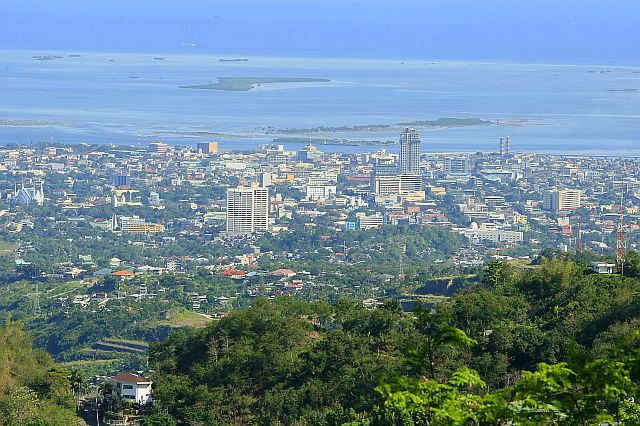Local developers are encouraged to extend their focus to the outskirts of the metropolitan to avoid a possible housing meltdown.
Lawyer Amay Ong Vaño, past national president of the Philippine Association of Real Estate Boards (Pareb), made the call in an interview on Tuesday especially since Cebu City has become more saturated with condominium projects.
Ong Vaño warned that unless developers are already as secure as “the likes of the Ayalas, Henry Sy, or Lucio Tan,” they must slow down on the construction of condominium units or else suffer a meltdown like what happened in the US a decade ago.
The US housing bubble affected over half of the country where housing prices peaked in early 2006, started to decline in the same year and in 2007, and eventually reached new lows in 2012.
Housing bubble
A housing bubble is a run-up in housing prices fueled by demand, speculation and exuberance. It usually starts with an increase in demand, in the face of limited supply, which takes a relatively long period of time to replenish and increase.
Speculators enter the market, further driving demand. At some point, demand decreases or stagnates at the same time supply increases, resulting in a sharp drop in prices – and the bubble bursts.
Ong Vaño is encouraging developers to spread their projects to the outskirts of the city and focus on the economic housing segment where the need is greater.
Residential stock
Real estate consulting services firm Pinnacle estimated the residential stock in Cebu at 22,284 condominium units as of end-2016, reflecting a 148-percent growth from about 9,026 units in 2013.
In addition, an average of 5,000 units will be delivered in the next couple of years. In terms of take up, the average take up is 6,000 condominium units annually in the last four years.
Pinnacle said the projected increase may be comfortably absorbed by the market while stable increase in prices shows the soundness of the sector.
With new residential condominium projects sprouting all over Cebu City almost every year, one might surmise that there is a glut in terms of housing units within this market segment.
Property supply
But Ong Vaño said there is no excess supply of these kinds of properties and only a glut of people who cannot afford them.
“That is the danger, so much that developers have amended or changed their mode of payment,” the certified international property specialist said.
Years back, buyers were required to pay a 30-percent down payment in cash, but this has since evolved to an installment basis ranging from 36 months up to 60 months to pay with some developers offering no interest at all.
Even then, many Cebuanos still cannot afford to pay for these properties since most of the affordable units in the local inventory have already been taken by investors, both foreign and local.
Housing issues
William Floresta, current president of Pareb, said that many people are left with higher-priced condominium units because investors are given the opportunity to buy one or two floors of these properties.
“We learned that Malaysia does not allow foreigners to invest in the low-cost housing or low-cost condominium units. They can only buy properties there if they invest what is equivalent to P11 million to P12 million here,” he added.
Floresta said coming up with a similar law in the Philippines would help meet the demand for housing here.
Furthermore, he said that the government should also step up its comprehensive land use program because only a few local government units have an updated Comprehensive Land Use Plan (Clup).
The Pareb president said the Clup is a useful tool developers that can take advantage of the program to determine where to put up their projects.
Aside from a shift from high-rise buildings in the city to economic subdivisions in the countryside, real estate practitioners are also seeing a rise in other segments such as commercial and industrial.
Businesses, growth
Augusto Agosto, an appraiser and a member of the real estate management faculty at the University of San Carlos (USC), said that they noticed a rise in the number of commercial establishments in Cebu City.
He said this could be attributed to the growth of the local economy, with the gross regional domestic product (GRDP) of Central Visayas recorded as higher than the national gross domestic product (GDP) in 2016.
This could be owed to the influx of business process outsourcing companies here, among others.
Agosto said real estate workers should also start considering specializing not only in the residential segment but commercial and even industrial as well.
BPO, tourism
Samuel Lao, Pareb national director and vice president for the Visayas, for his part, said they are banking on four factors that would further drive the real estate industry in Cebu.
One would be the continued expansion of BPO and related companies here, which at present contributes millions of pesos to the local economy through the salaries of over 140,000 workers.
Another factor they are looking at is the province and region’s thriving tourism industry, catering to regular tourists, medical tourist and even foreign retirees.
Lao said the manufacturing sector is also poised to help fuel the growth of real estate in Cebu, with more Japanese and Chinese investors eyeing setting up operations in other parts of the province since export processing zones on Mactan Island are already fully occupied.
He added that Cebu’s growing population due to its attractiveness as a destination to work and study was also seen to increase the demand for real estate here.
Furthermore, the Duterte administration’s ambitious infrastructure program could also mean greater gains for the property sector all over the Philippines.
“With all of these in place, real estate in the country as well as in Cebu will have a big future,” said Lao.
